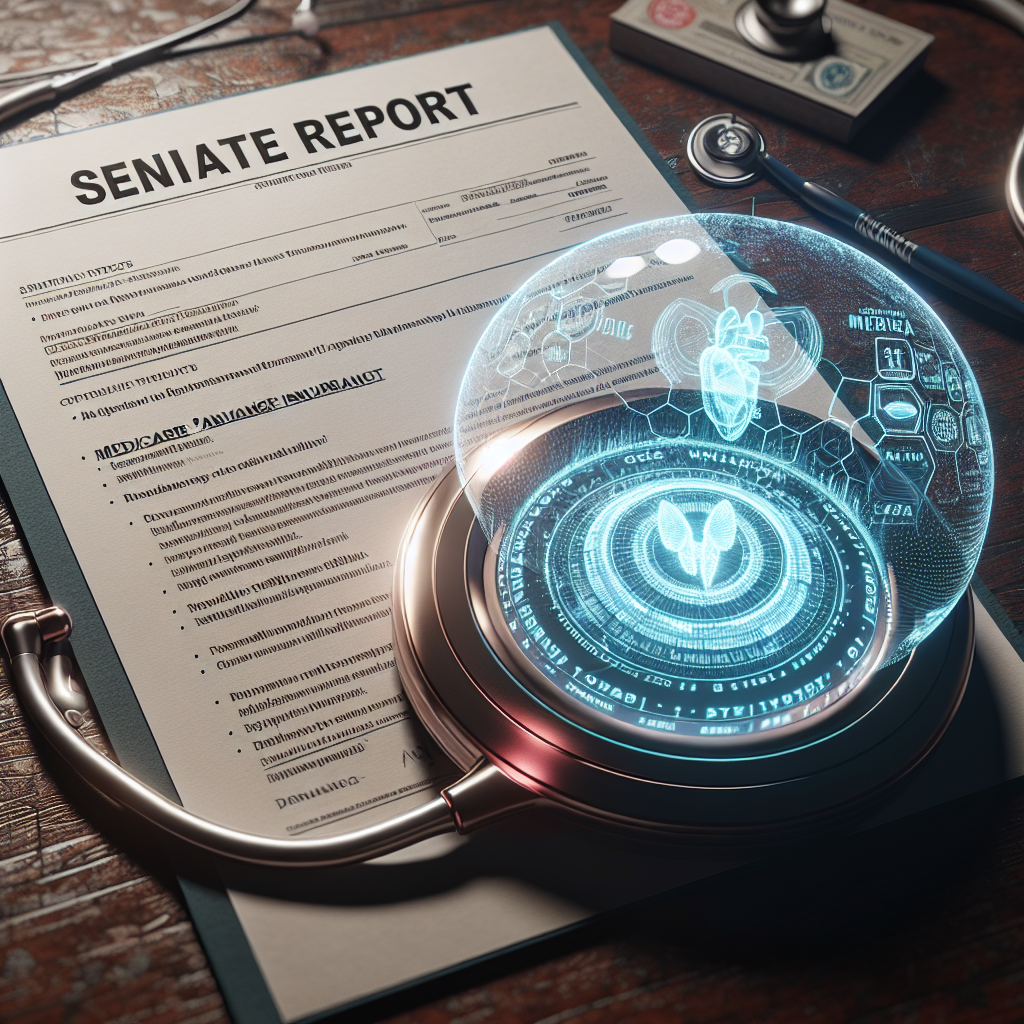Senate Report Criticizes Medicare Advantage Insurers for Denying Claims with Predictive Technology

The Senate’s recent report on Medicare Advantage insurers has sparked significant debate and concern over the use of predictive technology in denying claims. This comprehensive analysis delves into the intricacies of the report, examining the implications of predictive technology in healthcare, the ethical considerations, and the potential impact on patients and the healthcare system at large. Through detailed exploration of case studies, statistics, and expert opinions, this article aims to provide a thorough understanding of the issue at hand.
The Rise of Predictive Technology in Healthcare
Predictive technology has become a cornerstone of modern healthcare, offering unprecedented opportunities to enhance patient care and streamline operations. By leveraging vast amounts of data, these technologies can forecast patient outcomes, optimize treatment plans, and even predict disease outbreaks. However, the application of predictive technology in insurance, particularly in Medicare Advantage plans, has raised significant ethical and operational concerns.
Medicare Advantage, a popular alternative to traditional Medicare, is a program where private insurers provide Medicare benefits. These insurers have increasingly turned to predictive analytics to manage costs and improve efficiency. While this approach has its merits, the Senate report highlights a darker side: the potential for these technologies to be used inappropriately to deny legitimate claims.
- Predictive analytics can identify patterns and trends in patient data, allowing for more personalized care.
- Insurers use these technologies to predict high-cost patients and manage resources effectively.
- Concerns arise when predictive models are used to deny claims, potentially prioritizing cost savings over patient care.
The Senate report underscores the need for a balanced approach, where the benefits of predictive technology are harnessed without compromising patient rights and access to necessary care.
Case Studies: The Impact of Denied Claims
To understand the real-world implications of denied claims due to predictive technology, it is essential to examine specific case studies. These examples illustrate the challenges faced by patients and healthcare providers when claims are unjustly denied.
One notable case involved a Medicare Advantage beneficiary who was denied coverage for a critical surgery. The insurer’s predictive model flagged the procedure as unnecessary based on historical data, despite the patient’s physician advocating for its necessity. This denial not only delayed essential treatment but also placed the patient at significant risk.
Another case highlighted in the Senate report involved a patient with a chronic condition who was denied coverage for a new medication. The predictive model used by the insurer suggested that the existing treatment was sufficient, ignoring the patient’s deteriorating condition and the physician’s recommendation for a change in medication.
- These cases demonstrate the potential for predictive technology to override clinical judgment.
- Patients often face lengthy appeals processes, delaying access to necessary care.
- Healthcare providers are burdened with additional administrative tasks to justify treatments.
These examples underscore the need for oversight and regulation to ensure that predictive technology is used ethically and responsibly in healthcare insurance.
Ethical Considerations and Regulatory Challenges
The use of predictive technology in denying claims raises significant ethical questions. At the heart of the issue is the balance between cost containment and patient care. Insurers are tasked with managing resources efficiently, but this should not come at the expense of patient well-being.
Ethical considerations include the transparency of predictive models, the potential for bias in algorithms, and the accountability of insurers in decision-making processes. The Senate report calls for greater transparency in how these models are developed and applied, ensuring that patients and providers understand the criteria used in claim evaluations.
Regulatory challenges also abound. The rapid advancement of technology often outpaces existing regulations, creating a gap in oversight. The Senate report advocates for updated regulations that address the unique challenges posed by predictive technology in healthcare insurance.
- Transparency in predictive models is crucial to ensure fairness and accountability.
- Bias in algorithms can lead to discriminatory practices, disproportionately affecting vulnerable populations.
- Regulatory bodies must adapt to technological advancements to protect patient rights.
Addressing these ethical and regulatory challenges is essential to ensure that predictive technology serves as a tool for enhancing, rather than hindering, patient care.
The Role of Stakeholders: Insurers, Patients, and Providers
The successful integration of predictive technology in healthcare insurance requires collaboration among all stakeholders. Insurers, patients, and healthcare providers each play a critical role in shaping the future of this technology.
Insurers must prioritize transparency and accountability, ensuring that predictive models are used ethically and responsibly. This includes providing clear explanations for claim denials and offering robust appeals processes for patients and providers.
Patients, on the other hand, must be empowered with knowledge and resources to navigate the complexities of insurance claims. Education and advocacy are key components in ensuring that patients can effectively challenge unjust denials and access necessary care.
Healthcare providers also have a vital role to play. By collaborating with insurers and advocating for their patients, providers can help ensure that clinical judgment is not overshadowed by predictive models. Additionally, providers can contribute valuable insights into the development and refinement of these technologies.
- Insurers must commit to ethical practices and transparency in claim evaluations.
- Patients should be educated and empowered to advocate for their rights.
- Healthcare providers can bridge the gap between clinical judgment and predictive technology.
Collaboration among stakeholders is essential to harness the potential of predictive technology while safeguarding patient rights and access to care.
Future Directions: Balancing Innovation and Patient Care
As predictive technology continues to evolve, the healthcare industry must find a balance between innovation and patient care. The Senate report serves as a wake-up call, highlighting the need for thoughtful integration of technology in healthcare insurance.
Future directions include the development of ethical guidelines and best practices for the use of predictive technology. These guidelines should prioritize patient care and ensure that technology serves as a tool for enhancing, rather than hindering, access to necessary treatments.
Additionally, ongoing research and evaluation are crucial to understanding the long-term impact of predictive technology on healthcare outcomes. By continuously assessing the effectiveness and fairness of these technologies, stakeholders can make informed decisions that benefit patients and the healthcare system as a whole.
- Ethical guidelines and best practices are essential for responsible use of predictive technology.
- Ongoing research and evaluation can inform future developments and improvements.
- Balancing innovation with patient care is key to the successful integration of technology in healthcare.
The future of predictive technology in healthcare insurance holds great promise, but it requires careful consideration and collaboration to ensure that it serves the best interests of patients and the healthcare system.
Conclusion
The Senate report on Medicare Advantage insurers and the use of predictive technology in denying claims highlights a critical issue in modern healthcare. While predictive technology offers significant potential for improving efficiency and patient care, its application in insurance requires careful oversight and ethical considerations.
Through detailed examination of case studies, ethical challenges, and stakeholder roles, this article underscores the need for transparency, accountability, and collaboration in the use of predictive technology. By prioritizing patient care and ensuring that technology serves as a tool for enhancement rather than hindrance, the healthcare industry can harness the full potential of predictive analytics while safeguarding patient rights and access to necessary treatments.
As the healthcare landscape continues to evolve, stakeholders must work together to balance innovation with patient care, ensuring that predictive technology serves as a force for good in the healthcare system.





